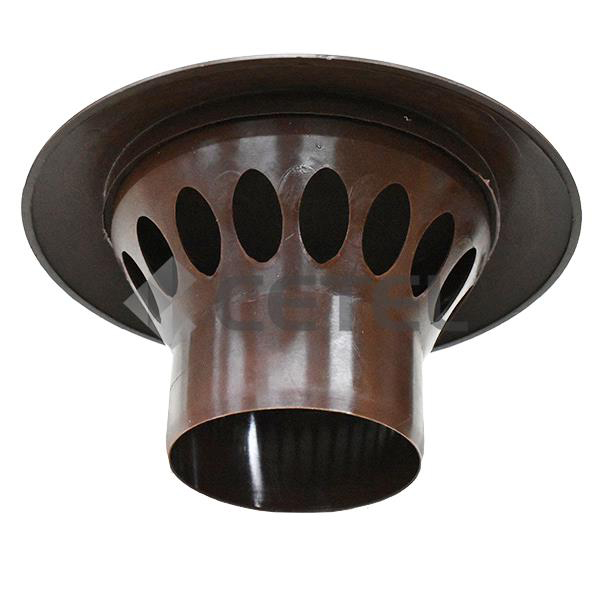Vent and aeration valve - ways to deal with sewer odours
Every sewer system requires proper ventilation - mainly for the comfort of the occupants. Without proper ventilation, our home will be exposed to foul odours emanating from the sewer system. The basic elements to prevent fetor are the classic vent and the modern aeration valve, and each solution has its advantages and disadvantages.
Causes of sewer odours
The sewage system has appliances that work with traps that block the penetration of sewer gases into the house. If in too much negative pressure occurs in the sewer pipe, water from the traps is sucked out and the unpleasant odour gets into the house. It becomes a lifesaver to supply the sewerage system with adequate fresh airinfluenced by ventilator or air admittance valve.
Ventilator - characteristics
Vent (a.k.a. roof chimney) is part of the sewerage system visible from the outside, projecting from the roof slope. It has a distinctive 'house' shape. It is not only responsible for air suctioni.e. the introduction of fresh air into the sewerage system, but also discharge of duct gases to the outside. In order for it to work properly, you must insert its sewer riser through the roofwhich is related to the location of the vent:
- the outlet must not be adjacent to the ventilation duct and skylight windowas there is a likelihood of odours returning into the house through an open window,
- appropriate height and roof mounting enables absolute tightness and prevents moisture from penetrating the roof sheathing.
The construction and material of the extractor depends on the type of sewer riser:
- Plastic (PVC or PP) - Such extractors usually have diameters of 50, 75, 110, 160 and 200 mm.
- cast iron - cast iron exhaust pipes with nominal trapper diameters ranging from 50 to 200 mm are fitted.
The spouts consist of:
- ventilation chimney with roof and vents with an appropriate texture,
- ventilation pipe,
- chalice (reduction element for the diameter of the riser),
- protective cap.
The vent allows rapid wastewater drainage and low sewer overflow rate. It helps to ventilation of external tanksincluding septic tanks. Gases are removed quickly, efficiently and safely. Like every component, the extractor also has its drawbacks, involving higher installation and roofing costs with its participationwhich can bring the risk of leakage, and danger of icing up and partial blockage during frosty weather.
The vents can come in a variety of shapes and colours, as demonstrated, for example, by the following. Sewer vent PP DN 110 brown, Sewer vent PP DN 50, Sewage outlet PP DN 160 orange, Sewer vent PP DN 75 brown or Sewer vent stack 160 - complete.
Air admittance valve - characteristics
An air admittance valve is a less expensive way of ventilating a sewer system than a ventilator. Like it, it enables Effluent drainage is smooth and inaudible inside the house.. It works by suction of air around the surface during negative pressure in the sewage system. In order to function properly, it is necessary to provide it with adequate aira, helped by the aesthetic ventilation grilles.
The aeration valve is easy to install and replace. It does not need to be mounted above the roof, is located inside the building. It is mainly installed at the end of the risers. Depending on the place of use (kitchen or bathroom riser) it must be of an appropriate size (e.g. 100 mm, 75 mm).
Can an air admittance valve completely replace an air vent?
Experts agree that The best solution is a combination of extractor and aeration valve.
It is not possible to replace all vents. At least one riser pipe (the one most heavily laden with waste water) must be above the roof and terminated with an air outlet. This is due to its dual function of venting channel gases to the outside, which the aeration valve does not have.
If you nevertheless wish to use only aeration valves, you can do so only in buildings not higher than four storeys.
Despite their drawbacks, the extractor and aeration valve are very important components of any sewerage system. If you have the cash, it is best to go for extractor vents, but with a love of aesthetics and the need for less expensive ventilation, you can go for aeration valves, bearing in mind that for safety and comfort purposes, it is a good idea to install one vent on the roof.

